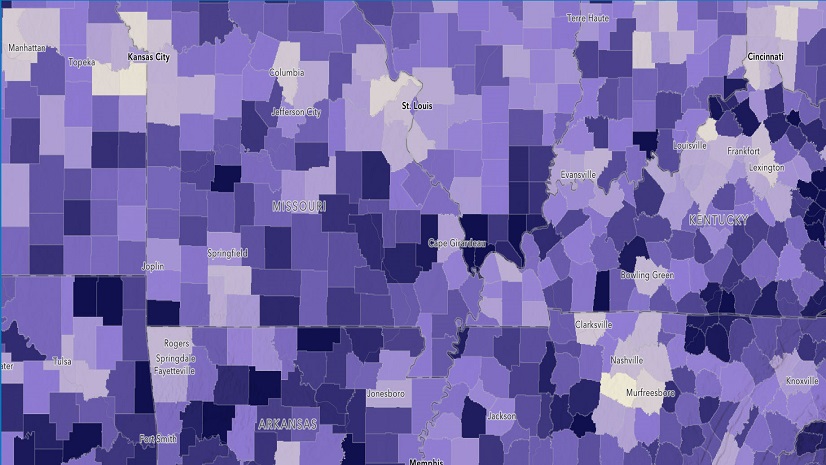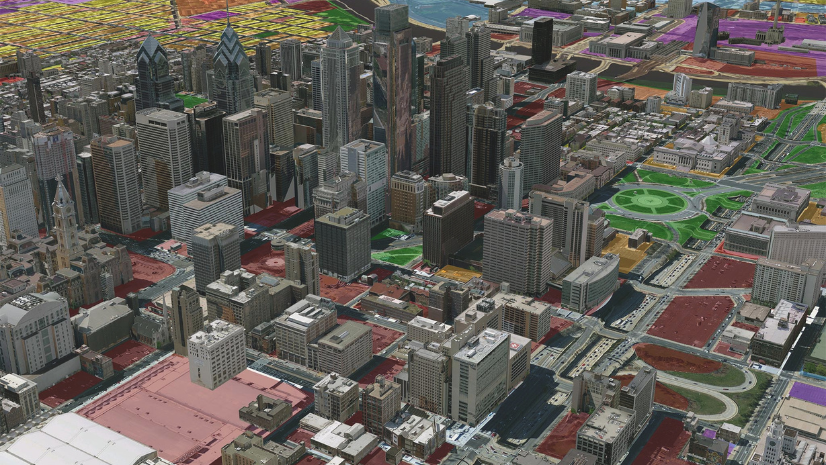As we continue to explore the intersection of GIS and health, our focus now shifts to maternal and child health—an area where geographic information systems (GIS) can offer transformative insights. Following our previous discussions on the opioid epidemic and healthcare accessibility, this third installment in the Trends in Health GIS series takes a deep dive into the pressing issues facing maternal and child health today. From rising maternal mortality rates to inequities in healthcare access, GIS provides critical tools for understanding and addressing these challenges.
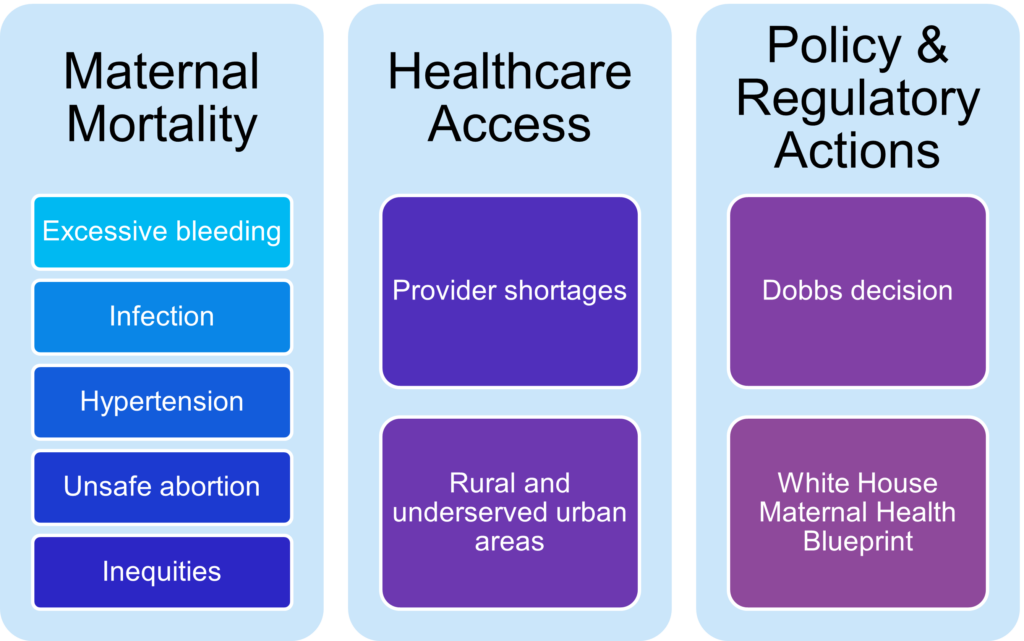
Global Trends in Maternal Mortality
Despite global efforts to improve maternal health, approximately 287,000 women died from pregnancy-related causes in 2020, with excessive bleeding, infections, hypertension, and unsafe abortions being the primary culprits. Most of these deaths are preventable, yet they disproportionately occur in low and lower-middle-income countries, particularly in sub-Saharan Africa and Southern Asia. These regions account for a staggering 86% of global maternal deaths (World Health Organization).
GIS can help public health officials analyze maternal mortality data across these regions, pinpointing the places where interventions are most urgently needed. By mapping the availability of skilled birth attendants and health facilities, GIS allows for targeted resource allocation, ensuring that pregnant women have access to timely, life-saving care.
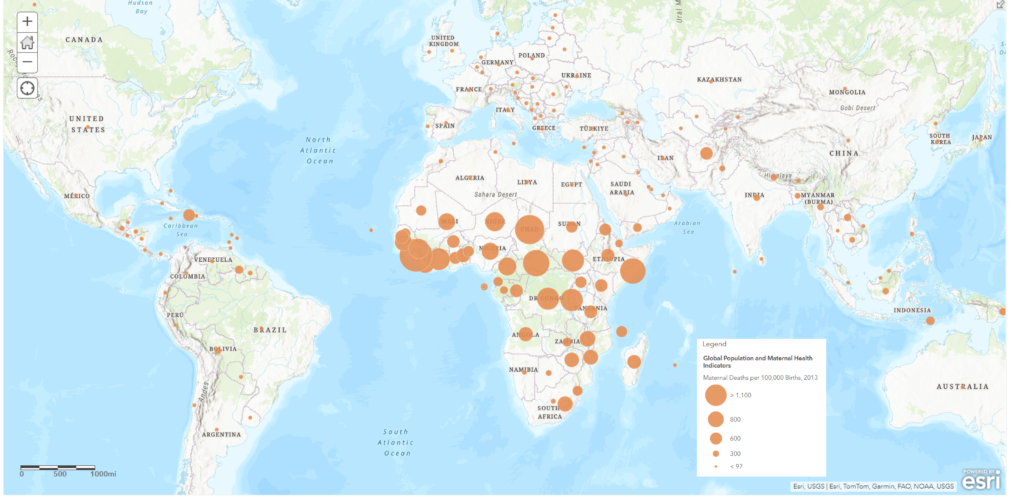
Maternal Mortality in the United States: A Crisis
Surprisingly, the United States faces its own maternal health crisis, holding the highest maternal mortality rate among developed nations, with 32.9 deaths per 100,000 live births in 2021. For Black women, the numbers are even more alarming, with 69.9 deaths per 100,000 live births (Centers for Disease Control and Prevention). This stark racial disparity reflects what are known to be deep-seated systemic inequities in healthcare access and quality. Regardless of income or education level, Black women are three times as likely to die from pregnancy-related complications compared to their white counterparts.
GIS plays a pivotal role in visualizing these disparities, enabling public health professionals to analyze patterns of maternal mortality by race and geographic location. Adding in infrastructure data like hospital availability and healthcare provider distribution along with socioeconomic factors such as income and education levels contributes to the design of interventions that directly address local needs and improve equity by decreasing disparate outcomes. For example, a GIS-based analysis in South Carolina revealed a strong correlation between limited access to obstetric care and higher rates of low-birthweight babies.
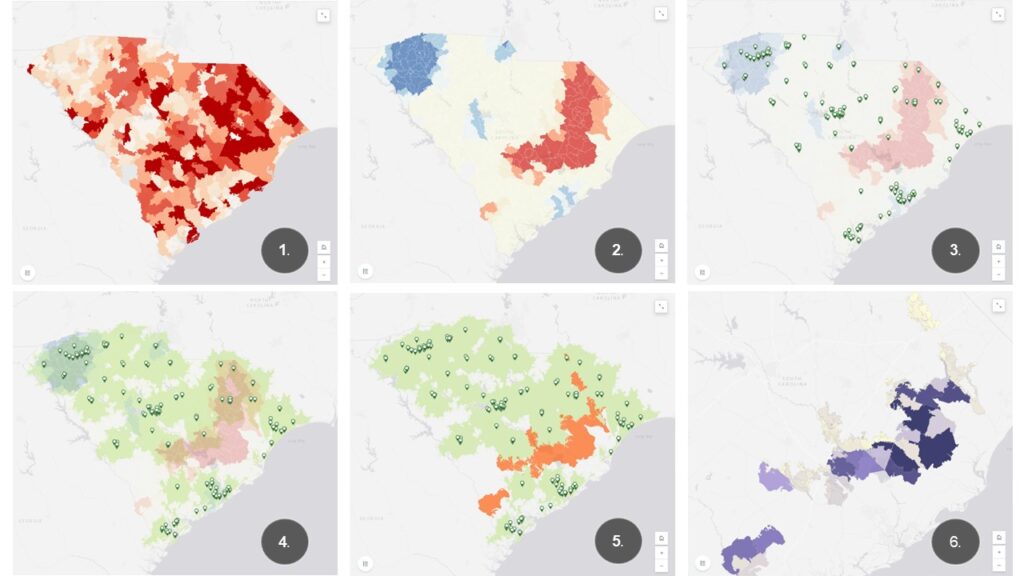
The Role of GIS in Policy and Regulatory Impacts
Policy decisions profoundly impact maternal and child health, particularly in the United States. The 2022 Dobbs v. Jackson Women’s Health Organization decision, which overturned the constitutional right to abortion, has led to significant geographic variations in abortion access. Currently, 14 states have enacted near-total abortion bans, forcing women in affected areas to travel long distances for care.
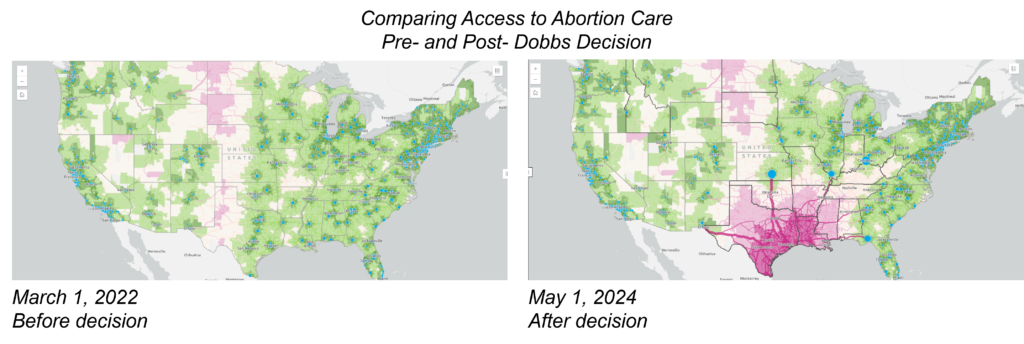
GIS tools, like the Abortion Access Dashboard, offer insights into the effects of these policy changes not only by mapping travel times to abortion clinics before and after the Dobbs decision, but also revealing how travel distances disproportionately affect women of color and those with lower incomes, further exacerbating inequities in maternal health outcomes. Spatial analysis has shown that women in areas with high proportions of Black and Hispanic residents experience significantly longer driving times to abortion clinics, contributing to delays in care. The dashboard also shows the surge in demand for the abortion clinics nearest the banned areas.
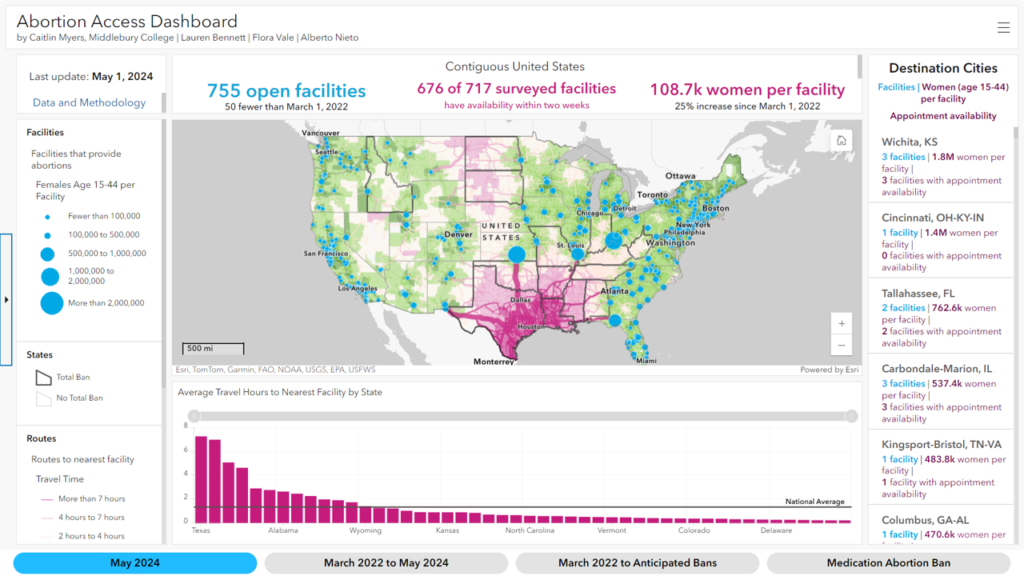
The Biden-Harris Administration declared its commitment to cutting the rates of maternal morbidity and mortality, reducing the disparities in maternal health outcomes, and improving the overall experience of pregnancy, birth, and postpartum for people across the country as outlined in their Maternal Health Blueprint. GIS can be used for all parts of this program, but I thought I’d specifically mention the Maternal, Infant and Early Childhood Home Visiting Programs focused on serving families at risk for poor outcomes. In this case, GIS could support the process by identifying the highest risk communities and also improve efficiency with optimized routing for the health workers, including mobile phone navigation and even data collection during a visit.
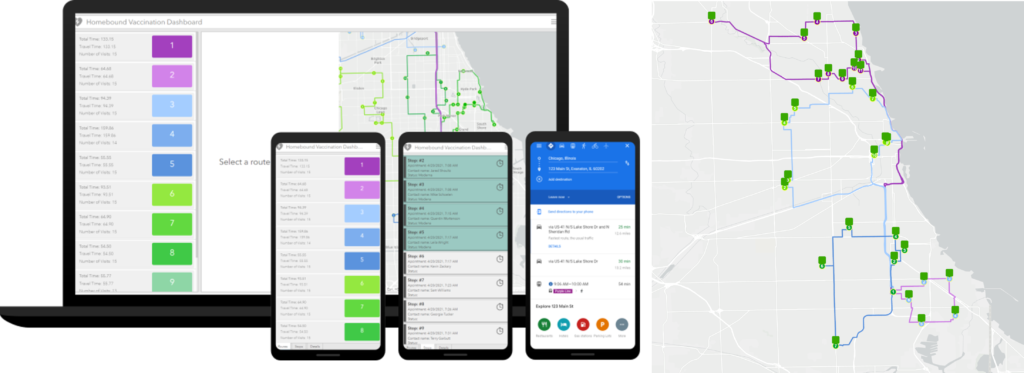
Addressing the Formula Shortage with GIS
Sometimes the concept of access is not only about driving times or distances. Sometimes it’s about the supply chain and its impact on critical resources. You may recall that in 2022 there was a critical shortage of baby formula. This put many infants at risk for nutritional deficiencies, like low iron levels that can cause iron deficiency anemia or Vitamin C deficiency. Babies could also suffer digestive problems and even bloody diarrhea when cow’s milk was substitute for formula. GIS proved instrumental in this crisis by helping local milk banks raise awareness about a safe alternative – donated breast milk. By using Tapestry Segmentation data, GIS experts were able to enhance outreach and communication efforts, provide opportunities to donate breast milk, and match donated milk to those in need. Read more about this innovative use of GIS in this case study.
Leverage the Tools you Likely Already Have
Maternal and child health faces a multitude of challenges, from rising mortality rates to inequities in healthcare access. But GIS offers hope, providing powerful tools to analyze, understand, and address these complex issues. Whether it’s identifying gaps in care, optimizing service delivery, or assessing the impact of policy decisions, GIS empowers health professionals to make data-driven decisions that save lives.
These tools are widely available—the next step is to apply them to create a safer, healthier world for mothers and their children. If we can help you, please contact us at healthinfo@esri.com.
It won’t be long until I publish the next and final installment in this years’ ‘trends’ series, where I’ll consider indoor GIS for health organizations.


